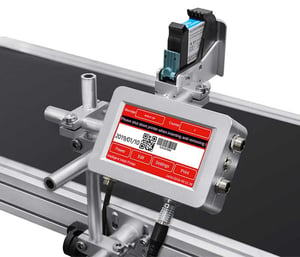 The 3 key elements for a successful TIJ installation
The 3 key elements for a successful TIJ installation
We offer and ship our thermal inkjet (TIJ) coding printers all over the country and in some instances around the globe, yet we don't have a single field service technician. "How is this possible?", you ask! Well, the Hewlett-Packard® driven thermal inkjet engine is maintenance free and simple to use. We call it a self-installation technology. That being said, there are three key elements to a successful install, which I'll cover here with three simple terms and definitions.
1. throw DISTANCE
This is the distance from the print head to the surface you are printing on. This technology has a limitation of 6 mm, or a 1/4 inch, and the closer you can get the print head to the surface the better print quality you will achieve. However, even at the outer limits you can still achieve a legible print if not perfect. In this instance, size does matter. The larger the print, the greater distance you can be away from the print head, and, conversely, the smaller the print the closer you will need to be.
2. print speed
The printers have a print speed setting that must be adjusted in order to match your conveyor speed. Depending on which brand and model of TIJ printer you have, this setting may have a different name but the concept is the same. If you have a fairly consistent conveyor line speed then this will only require some time during initial set up to tune in properly. For inconsistent or variable speed conveyors and packaging equipment, we recommend incorporating an encoder that can measure the speed so the printer can adjust print speed accordingly.
3. print delay
This setting determines the time interval between when the printer receives a print signal (either from an internal product detector, external product detector, or other external device) and when it prints. A correct print delay not only gets the print on the package but also helps in proper placement. If you have a cutout, white space, or other predetermined print area this setting helps make sure that the code gets to the proper position. The proper setting will vary depending on which model printer being installed, the trigger device chosen and distance from sensor to the print head. **NOTE: Print delay is dependent on the print speed. If you change your conveyor speed after setting your print delay, you will then need to recalibrate your print delay**


